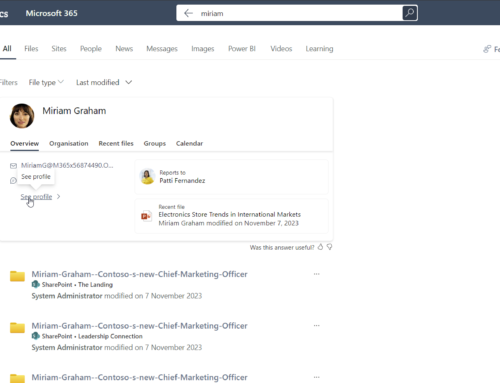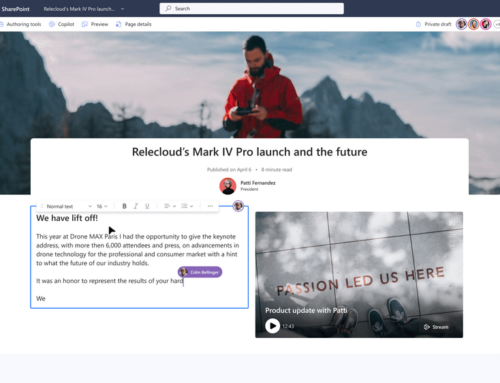Planning a project is a lot like planning a road trip. You create lists of what to bring, name the key players and assign them tasks, strategize on how to pack, and commit to the destination. We recently detailed our project management methodology in a blog series called Finding Your Direction: Four Key Elements of a Successful Project. In that series, we explained how we work with clients in four phases: Initiation and Assessment, Design, Development, and Deployment and Review. Researching our methodology revealed an interesting point: our seasoned managers experienced many of the same pitfalls in projects and had all learned how to avoid them.
In this blog, we hear from our team of Office 365 and SharePoint experts. They have worked together on hundreds of projects, finding their rhythm, and seeing both the patterns that bring success and the pitfalls to avoid along the way. Our experts are project guides, taking our company name seriously: a compass is an instrument that always points to magnetic north. Our clients count on us to guide them to the best solutions for their business problems and assist them with their continuous digital transformation every day, 365 days a year.
Our experts manage migrations, portals, and intranet and business application projects while keeping up with the ever-changing Microsoft 365 landscape. We love what we do, and we would love to help your business with your next project. We all learn by doing and trying different ways, always leveling up our methods to avoid the dreaded pitfalls.
In general, the definition of a pitfall is any hidden or unsuspected danger or difficulty that interrupts a process and requires regrouping. In project management, anything that impedes a project from smooth, successful completion is considered a pitfall.
Think of a time when you were halfway through setting up the tent on a camping trip when you discovered someone packed the tent but forgot the stakes. How about all those times you forgot an umbrella or sunscreen, or those jumper cables you took out of the trunk to make room for the cooler, but forgot to load back in? Life and projects have many twists and turns. You can prepare and still find you do not have what you need at the ready. The Compass365 team works with our clients to not only deliver the best result, but to make the journey to that result as smooth and surprise-free as possible.
Below are a few direct quotes from clients. All of these came up in discovery discussions which could easily have turned into a typical project management pitfall. Luckily, our experts are always listening for warning signs that have the potential to take a project off course.
Every project is unique, meaning no one can anticipate every pitfall. Still, we have found that anticipating and avoiding these three alleviates a significant number of issues because we build measures in our methodology to prevent them.
The surprise layer: “Well, actually that all lives on this other SharePoint 2010 farm….”
Most businesses do not have simple IT setups. They are multi-layered with many versions of hardware, software, legacy systems, homegrown custom applications, and different ways of organizing data. Some aspects can be embarrassing for an IT manager to discuss, so they leave out certain details they think will not affect this “new migration project.” Later, we discover the very thing they are hiding or have forgotten about is the missing piece that holds everything up. Nobody wants to hear new and critical information mid-project. There has to be full initial disclosure on the client side of their systems. Our job as a project team is to make sure we ask all the right questions, dig for the documentation, and even assist creating that documentation if it doesn’t exist. This pitfall can happen any time, including in the assessment phase. Alleviating surprise layers leads us into the next pitfall.
Missing key stakeholder(s): “Oh by the way, we need to move all of these workflows too….”
Sometimes clients will “save money” or “be more efficient” by only involving one or two of their people on the project. That may seem smart, but when that one person suddenly brings in a few others once the project is underway – like at the end of the testing phase – that’s never good. Understanding that IT teams and “the business” are often from different ends of the company spectrum is critical when running a project. As an example, a large organization contracted us to replace a legacy system. The original review of their current forms and workflow was with their subject matter expert in services, but when we began building for the “business” end users, we learned those end users detailed processes were not included. This is why including key end users in the design phase is vital. Without them, you risk end user rejection. Migration should be a celebration, not a chorus of, “we were never involved, this is all new to us, and unless this new thing works exactly the way we’ve been doing it, we won’t accept it.” Designing a project without the key stakeholder(s) involved can cause massive delays. We ensure the right team is at the table from the start, with a minimum of three stakeholders (and not all from the IT department). We also ask a lot of questions, including what is addressed in this next pitfall.
Assumptions made: “I thought this process would be automatic….”
The human brain makes assumptions all the time, based on what we know, what we believe, and how we perceive. We often think everyone else thinks or feels the way we do, but this is often not the case. After deploying a solution, hearing “I thought this process would be automatic” is a pitfall that comes from the team not sharing their assumptions about the end game or beneath the surface goals up front, so they can be shared and understood by everyone on the project. Technology decisions need to match business decisions. Creating a project plan that is continuously reviewed, updated, and talked about is the only way around this pitfall. We run our projects using deep listening and communicating expectations about how we believe a solution will work, along with documenting changes, questions, and answers to those questions as we go. No one wants to get to the end of the project having the assumption that it would work one way, only to find it is not what everyone thought they agreed to in the plan.
Having experienced these pitfalls, we now look out for them every time. In fact, we’ve built these lessons learned into three questions we ask all our new clients:
- “What surprise layer of technology have we have forgotten to ask you about?”
- “Could anyone be missing from this stakeholder team list, and if so, who is it?”
- “Can you give us a short list of some results you expect the project will deliver that have not already been listed?”
Compass365 prides itself on having experts who learn and succeed through many different scenarios. We understand that no project is perfect, and that the collaborative approach works best. Being flexible and taking new information into consideration is essential to delivering success. It is also the advantage of working with Compass 365, instead of a large, global firm with a specific, rigid work style and that offshores the development. Our methodology includes understanding and expecting the variations and minor adjustments that happen along the way. We do not just take the client’s requirement list, then build, complete, and hand over the solution in a transactional manner.
We work hand in hand with clients, looking for pitfalls and pushing forward to ensure that the original business problem is being solved. Since this is a collaboration, other issues that may arise can be quickly addressed and brought into the job at hand.
Identifying requirements, key stakeholders, and talking through assumptions are the critical starting points that help us answer these important questions:
- Does the solution solve the business problem?
- Are all the people affected by these changes represented and involved?
- Will the solution work the way we expect and the client needs?
Forgetting the tent stakes for a camping trip is a bummer, but having an important project reach a standstill because you never got a critical piece of information, a strategic person’s opinion, or made a grand, unvoiced assumption about how something is going to work has much greater ramifications. At Compass365 we learn from those moments and share those stories with our clients (especially new engagements) so we all come at projects from the same place. We know everyone is human, and we will always have more to learn from each other. We often hear from companies that have suffered through disappointing technology implementations, and we understand how that feels. We are proud of our expert teams because they guide our clients through our ever-improving project management methodology, with many years of success.
We would love to work with you on your next project and hope you will sign up for our free assessment to learn more.









